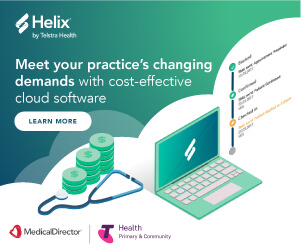3 Tips to boost digital transformation in healthcare
Digital transformation is rapidly changing the way we manage clinical workflow and optimise patient experience, but security, big data concerns and barriers to better interoperability are preventing the health sector to fully leverage the potential of new technological innovation.
In this article, we take a look at three critical ways we can leverage the power and potential of digital transformation in healthcare.
Cloud technology
Robotics, VR, AR and Cloud Computing are set to underpin our tech future, with a recent report released by Dell Technologies with Institute for the Future (IFTF) revealing 70% of U.S. organisations now operating in the cloud, with this figure expected to grow further globally. In fact, the report predicted by 2030, cloud technologies will be so embedded that memories from the pre-cloud era will feel positively archaic by comparison.
But compared with other industries, the healthcare sector has been relatively slow to embrace the cloud. In fact, the state of current interoperability in Australia’s healthcare sector has been increasingly frustrating GPs who can still be faced with working with outdated, server-based, legacy systems and ‘siloed’ ways in which hospitals and practitioners communicate.
But we, as consumers and individual users, are already experiencing a seismic shift in our understanding of the cloud and its impact in out every day lives. You can share files, music, images and information with ease and little technical know-how and you can manage your day-to-day workflow with little or no set up time and little technical support. So it’s only a matter of time cloud is leveraged as part of digital transformation in healthcare.
One example of healthcare boosting digital transformation via cloud technology is IT service provider Technology Tree, who recently implemeneted MedicalDirector’s cloud-based Helix platform as part of a digital transformation strategy for one of its Medical Centre clients in Perth.
“When we started working with this Medical Centre, they were stuck in the dark ages when it came to IT. They had a core application for practice management, but it wasn’t meeting their needs,” Technology Tree said. “They needed to look at changing the way their IT was being run. It was still a traditional server-based environment, when really, what they needed was a true cloud solution. That’s where software is headed.”
Robust, secure IT frameworks
With recent legal and regulatory tightening of data security in Australia, healthcare providers are turning towards more robust, digitally-enabled solutions to control the ebb and flow of sensitive patient data.
Having the latest healthcare applications are absolutely critical when it comes to combatting security breaches, and prudent healthcare providers and practice managers need to ensure all software systems are updated regularly.
Healthcare providers now have more options when it comes to adopting cloud-based frameworks, virtual appliances and data loss prevention mechanisms. New tools around application firewalls and application-centric security are now allowing healthcare providers to have greater control over data security. Meanwhile new VM-based security solutions allow you to monitor internal traffic and integrate with APIs to let you proactively manage VM changes dynamically
At the same time, new security tools can allow you to monitor who is actually accessing the data, what kind of data is being accessed and from where. This is particularly crucial in the age of cloud-based mobility and IoT application access.
Greater interoperability
The complexity of healthcare data means that continuing to build on standards development is a necessary part of any interoperability solution.
Solving healthcare interoperability challenges in healthcare is a priority, and cloud-based technology is opening fresh opportunities to enable change.
The medical profession needs to improve the state of interoperability and embrace the benefits of digital transformation, and already, interoperability and data exchange are driving technology buying decisions for 36 per cent of healthcare organisations, according to the 2017 Health IT Purchasing Intentions Survey.
But MedicalDirector’s recent whitepaper, Interoperability in healthcare: Synergising an industry, found while interoperability is paramount to an efficient system of care as well as more accurate patient diagnoses, there is some reluctance and fear around embracing technological change.
The report found many in the medical industry are unsure about the security of moving sensitive patient information around, especially now given the exponential rise of cyber attacks and data breaches. In fact, 76% consider the security of information being stored or sent their greatest area of concern in regards to managing patient information.
Moving forward, legacy patient data systems may not be able to keep up with the next generation of cloud-based systems that better support and promote interoperability. At the same time, increased security and more robust, cloud-based solutions are opening up fresh opportunities to embrace a more scalable and flexible solution that will help propel the scope of interoperable digital healthcare into the future.









